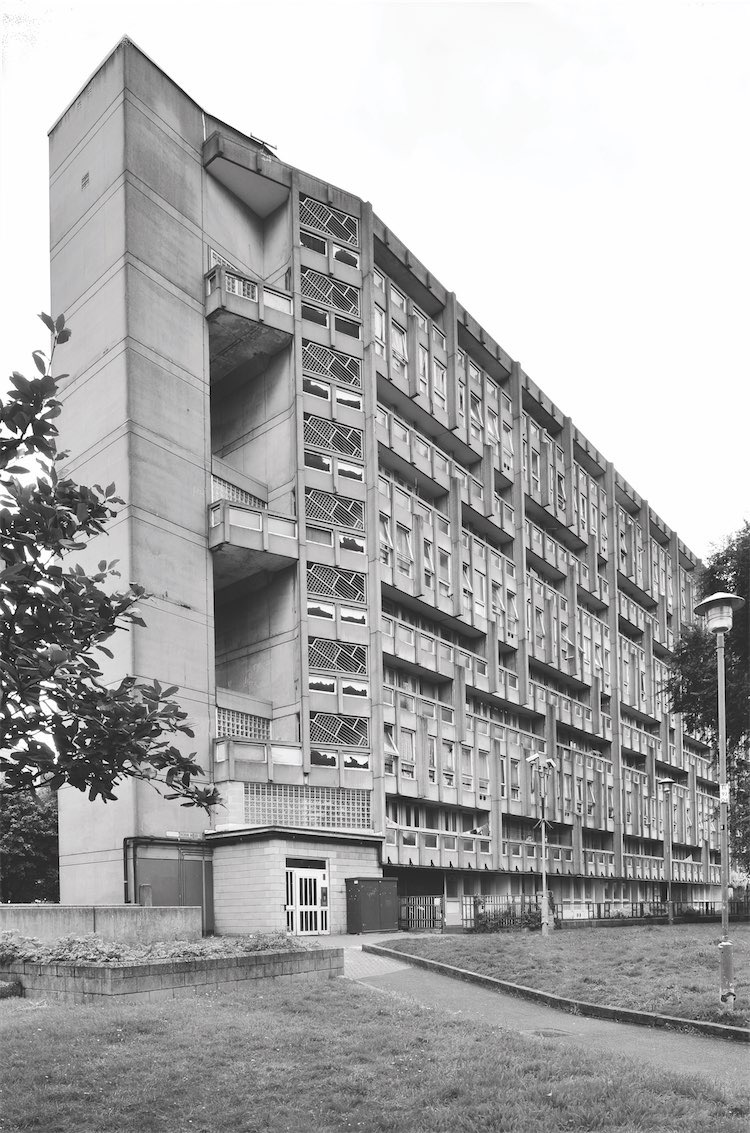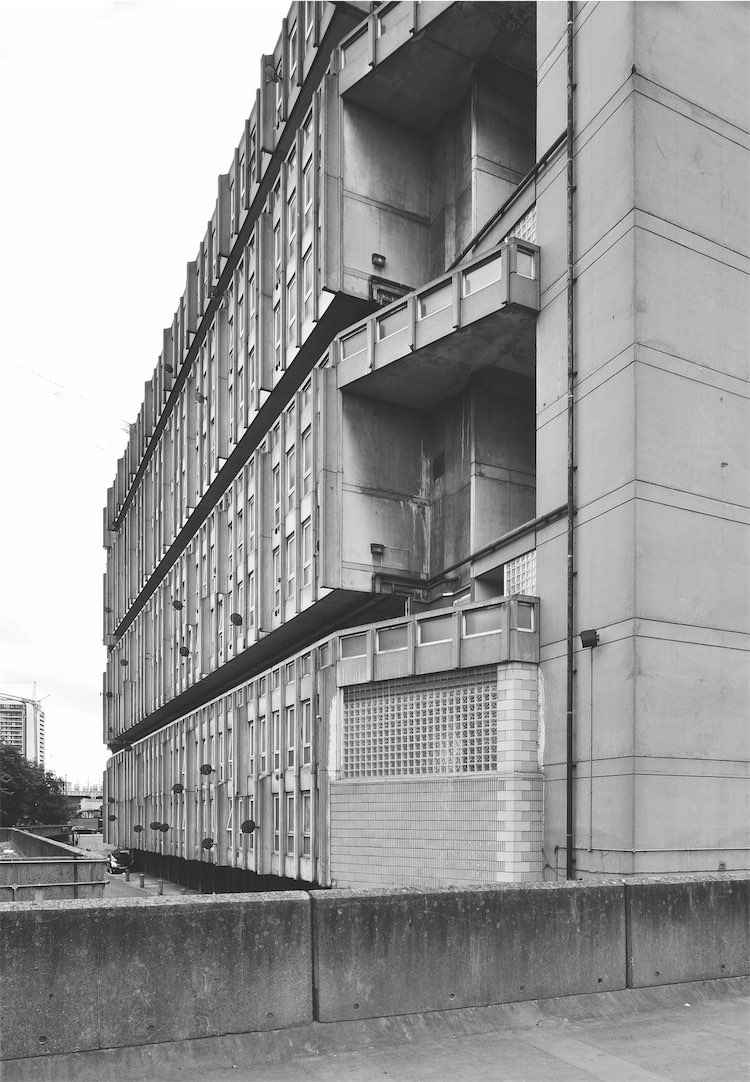How Britain's Built Environment Became Degraded
7 min read
In a stinging polemic, architectural historian and author of Making Dystopia Professor James Stevens Curl gives The House his view on exactly how Britain’s built environment lost its way
In what used to be called the British Isles (‘The Atlantic Archipelago’ appears to be the preferred term in certain circles) it is obvious that the built environment has suffered from massive deterioration over the last century, especially since 1945, and indeed much of it is a disgrace to any supposedly advanced, Western country. But this state of affairs is entirely man-made, the result of deliberate decision-making and the blind acceptance of dogmas still rigidly applied, but perceived by the clear-sighted as a disaster.
What became known as the Modern Movement in architecture and planning embraced the loud demands and ridiculous slogans of certain individuals who were almost deified in their own lifetime, and included Charles-Édouard Jeanneret-Gris (1887-1965), who, like other destructive, ruthless totalitarians such as Lenin, Stalin, and Molotov, adopted a pseudonym, in his case ‘Le Corbusier’, meaning something like ‘the crow-like one’. Among his schemes of the 1920s was an architectural time-bomb, proposing the complete destruction of the built fabric of Paris east of the Louvre, between Montmartre and the Seine, and its replacement with 18 gigantic skyscrapers, leaving room for motorways and windswept open spaces.
Hating the street, with all its diversity, he demanded its obliteration, and, lo!, his besotted disciples obeyed without question. Certain Germans (such as Walter Gropius (1883-1969), who prohibited the teaching of tradition-based architecture, and who, largely through the influence of the Nazi sympathiser, Philip Johnson (1906-2005), fatally corrupted architectural education in the USA, a process Sibyl Moholy-Nagy [née Sybylle Pietzsch, 1903-71] aptly called ‘Hitler’s Revenge’) urged the making of the tabula rasa, the complete erasure of the past, to give Modernist architects unhindered scope to start again.
These articles of faith, which included a denial that there was anything of value in what had been designed and built in previous millennia, were eagerly embraced by educational establishments, so that when new powers were granted by law after 1945, an orgy of destruction called ‘comprehesive redevelopment’ saw multitudes of well-built houses swept away, to be replaced by badly designed, ‘systems-built’ dwellings which leaked, had very poor sound and heat insulation, and were hated by those forced to live there. The colossal waste in such widespread flattening was eye-watering, and owners of properties which had been forcibly purchased for ludicrously small sums (virtually stolen, in fact) were defrauded, while developers and architects made packets.

One of the worst professional crimes ever inflicted on humanity was the application of Utopian Modernism to the public-housing stock in the 1950s, 1960s, and 1970s. Yet the architectural establishment and the ‘schools of architecture’ remained, and indeed remain, in total denial. Take the huge development at Hulme, Manchester, one of the largest undertaken in England, which had at its centre four quarter-mile long six-storey deck-access ‘crescents’, insultingly named after great architects of the past, the usual shabby trick of claiming spurious continuity with the past (the philistine, uninformed press swallowed this nonsense whole, and raved about the scheme providing ‘Georgian elegance’ worthy of ‘Bloomsbury’ and the best of ‘Regency’ England).
This appalling failure was designed by the Modernist firm of Wilson & Womersley, completed in 1971 (see Fig 1), and rapidly became one of the most notoriously defective and dysfunctional housing estates in Europe, yet Sir Nikolaus Pevsner (1902-83) noted approvingly in the 1960s that Manchester was “doing more perhaps than any other city in England … in the field of council housing”, and trotted out the embarrassingly foolish justification for tower blocks that architects “understandably” wanted them to provide the “necessary vertical accents” once found in “church spires”. Received Wisdom was that tower-blocks and high-rise deck-access schemes were the answer to the nation’s housing problems, but what sort of sense, in terms of æsthetics, economics, social improvements, or anything else, does it make when demolition of the Hulme Crescents began in 1991? Pevsner should have demonstrated less confusion of mind, and peered through fewer Gropius-tinted spectacles. Such a massive waste of resources, not to mention the dreadful damage done to the lives of families, does not appear to have been punished in any way, and indeed the perpetrators enjoyed undeserved rewards.
The problem is that architecture’s divorce from science and history has become complete: Modernism is really a quasi-religious cult which has created a new Establishment, controlling architectural education, and even the architectural media. Self-referential, remote from high culture, it has a vested interest in prolonging and extending its empty beliefs: given its obvious and very visible failure, it is astonishing how it manages to hold on. There is something very wrong with any society that encourages impostors, for the viruses raised in Modernist hothouses are infectious, and show every sign of destroying any hope for the future of the environment, as a dystopian hell-on-earth expands exponentially, yet the threat is ignored. The cult is damaging all logical foundations of knowledge and reason, yet we are distracted by trivia, encouraged by media promoting superficial spectacle, and fail to apply our scientific knowledge to call a halt to nonsense and all things that are a waste of time and money.

The adulation given to so-called starchitects has been a worrying development. Such creatures project self-images as liberal-minded and socially concerned, yet they pursue careers devoted to serving wealth and celebrity, creating an architecture that is uncouth, trashy, ill-mannered, threatening, and in artistic terms worthless, despite being obscenely expensive to realise from largely computer-generated images, light-years away from human experience or needs. Practitioners, mouthing cant about affordability, ethical regeneration, sustainability, inclusiveness, and whichever fashionable aims float in the polluted air of the time, slaver at the sight of the money-bags of anyone with access to unlimited off-shore ‘investments’, and with interests in oases of Sweetness and Light like China and the Middle East. They seem to be oblivious to the truth that the world in which they bask is stratospherically distant from the humdrum lives of unfortunates trying to keep afloat in an increasingly unpleasant environment in which they are bludgeoned daily by monuments to the cupidity of monstrous egos untouched by spiritual or compassionate values.
And, alarmingly, what seems to have escaped many is that Modernism is essentially Westernisation.
The public, of course, is not permitted to judge anything now promoted by the Art or Architectural Establishment: those who do not worship the personalities and works of deified monsters are judged blind, stupid, or reactionary, cowed and bullied into silence by the Arbiters of Taste, those professional pontificators who have terrified generations into disconnecting their optic nerves from their brains. Indeed, the RIBA Journal publishes vile pieces equating any dissent with the Far-Right, Racism, Nazism (of course!), and mental derangement. The desensitised can now only look with their ears, and it is that desensitisation, deliberately inflicted, that is the most terrifying aspect of it all: the dystopian hell all around us is now what we expect and accept. It is normal, because we have been told it is good, that the ugly is perfection, that the lie is truth, and that if you do not accept this, you are abused, denounced, vilified, and ridiculed.
The late Pope Benedict XVI was right: Relativism is proving the greatest menace of the 21st century, and it was Relativism which made the victory of Modernism possible.
Professor James Stevens Curl is the author of Making Dystopia: The Strange Rise and Survival of Architectural Barbarism (Oxford University Press, 2018, 2019). His latest book is English Victorian Churches (John Hudson Publishing, 2022). In 2017 he was awarded the President’s Medal of The British Academy for ‘outstanding service to the cause of the humanities’
